Jared Kushner, here are 25 more books you should read about Palestine, Israel relations
31 January 2020 23:24 UTC
Earlier this week, in the wake of the announcement of Donald Trump's "deal of the century" for Israel and Palestine, Jared Kushner, its chief architect explained to CNN's Christiane Amanpour just how much he had studied the region.
“I’ve been studying this now for three years,” Kuchner said. “I’ve read 25 books on it, I’ve spoken to every leader in the region, I’ve spoken to everyone who’s been involved in this.”
Most interest focused just on which 25 books Kuchner had read: some sleuthing by The Forward revealed several titles, including State of Failure and Hamas vs Fatah, by Jonathan Schanzer; and Thirteen Days in September, by journalist Lawrence Wright.
The impression from those few titles to emerge is that they are broadly written from a Washington perspective, and not necessarily that insightful about the lived experiences of Palestinians, who Kushner on Wednesday called "foolish" for rejecting his plan.
In the spirit of a geo-political book club, the editors and writers at Middle East Eye would like to offer Mr Kushner the following reading list to maybe deaden his echo chamber.
Our choices are, we suspect, more eclectic than those he has read so far, and include poetry, fiction and graphic novels amid geo-political analysis and discourse. The list, presented here in no particular order, is by no means exhaustive. We have restricted ourselves to books originally written in or translated into English.
But we hope that Mr Kushner and others engaged in securing the "deal of the century" might obtain a different perspective from the reading list below. Please let MEE know on Facebook and Twitter (@MiddleEastEye) which titles you think we have missed.
Twenty-five books, after all, barely scratches the surface when it comes to explaining what has become the Middle East's most intractable problem.
1. The Question of Palestine
by Edward Said
For a long time, Edward Said was the most high-profile and internationally recognised of Palestinian intellectuals. His untimely death in 2003 was a blow for Palestinian advocacy, especially in the US, where few prominent Palestinian voices have been able to rise to prominence.
The Question of Palestine was published in 1979, a year after Said’s better-known volume Orientalism, and discusses the situation of the Palestinians, including the history of the Nakba, the dispossession and scattering of the Palestinian diaspora, and the misrepresentation of the Palestinian cause in the Western world.
Said also examines the development of Palestinian political movements, particularly the Palestine Liberation Organisation led by his then friend Yasser Arafat, and the changing perceptions of Palestinian groups towards the question of Jewish identity and Israeli statehood.
Towards the end of his life, Said espoused a humanist vision of a unified secular state between the Jordan River and the Mediterranean, based on equal rights and universal suffrage. The reality on the ground in Israel-Palestine suggests a one-state reality is already playing out. The result, more than ever, is that Said’s ideals need to be pushed to the fore.
2. The Gun and the Olive Branch
by David Hirst
Few volumes during the past half-century have been as contentious about the Israel-Palestine conflict as David Hirst’s The Gun and the Olive Branch. First published in 1977, it was initially savaged in the UK and ignored in the US (the first 14 pages of subsequent editions detail this).
Hirst's narrative was the first of international note to question the pro-Israeli orthodoxy about the state’s creation as well as highlighting how Washington and other Western capitals had fuelled the conflict.
That Hirst, a reporter for The Guardian, had meticulously researched and presented his argument – the book comes in at more than 600 pages – only seemed to inflame his critics more.
But Hirst is even-handed in his coverage: he apportions blame to both sides, but is especially adept at examining the Israeli role in the conflict. Through this he pre-dated the later work of Israel’s New Historian revisionist school of academics, including Illan Pappe (below), who challenged the until-then accepted view of the state’s formation and past.
The most recent edition of The Gun and the Olive Branch was published in 2003, near two decades ago, during which so much has come to pass between Israel and Palestine. But Hirst’s work is still as relevant as ever: his analysis of the routes of the conflict, going back as far as the 1880s, are peerless and set the groundwork for what has come to pass since.
3. Palestine
by Joe Sacco
Palestine, by Joe Sacco, is one of the best reads for a novice attempting to understand the situation in the land between the River Jordan and the Mediterranean - and not just because it is a graphic novel, a medium historically dismissed as juvenile by many.
Based on reporting by Sacco from Israel-Palestine during 1991 and 1992 (the tail end of the first Intifada and before the Oslo Accords), it goes into uncompromising detail about life in the occupied territories and the daily occupation and injustices faced by Palestinians.
Sacco doesn’t shy away from the personal: although a self-professed sympathiser with the Palestinian cause, he notes that a formative moment in his understanding of the conflict was the news in 1985 of the murder of Leon Klinghoffer. The 69-year old disabled Jewish-American was killed by the Palestinian Liberation Front after it hijacked a cruise liner, something which Sacco says angered and discomforted him.
Throughout, Sacco presents the lives of real people - both Palestinians and Israelis - with unflinching honesty, resorting to neither polemic nor hyperbole.
4. Palestine +100: Stories from a Century after the Nakba
edited by Basma Ghalayini
In the introduction to Palestine +100: Stories from a Century after the Nakba, a powerful collection of short stories in which 12 Palestinian writers imagine life in 2048, editor Basma Ghalayini considers why Palestinian writers in general eschew the genre of science fiction.
“The cruel present (and the traumatic past)," she writes, "have too firm a grip on Palestinian writers’ imaginations for fanciful ventures into possible futures.”
Palestine +100 is a collection informed by catastrophe - the forced expulsion of 700,000 Palestinian Arabs in 1948 to create the state of Israel - that triggered a refugee crisis, the consequences of which reverberate to this day.
The ideas are myriad and eclectic: they include Saleem Haddad’s Song of the Birds (the teen sister of an older brother who killed himself sees her world disintegrate – literally); Anwar Hamed’s The Key (Palestinian ghosts defy technology to torment the Israel of the future); and Ahmed Masoud's Application 39 (Gaza City hosts the 2048 Olympic Games)
A worthy collection that excavates and probes, reacquainting the West with the horrors of Palestinian existence right now.
5. The Butterfly's Burden
by Mahmoud Darwish, translated by Fady Joudah
The oeuvre of acclaimed poet Mahmoud Darwish is too large to simply select one collection over another. With more than 30 published books and poems translated into 35 languages, he is deservedly one of the Arab world's most famous and prolific writers.
The Butterfly's Burden pulls together three of his previously published collections: The Stranger’s Bed (1998); State of Siege (2002), his response to the second intifada; and Don’t Apologize for What You’ve Done (2003), all published in Arabic following his return to Ramallah after 26 years in exile.
In much of his work he mixed modern poetry with Arabic rhythmical meters: subjects included the Palestinian revolution of 1965-1993 and the mass exodus of 1948
The Butterfly's Burden was awarded the Saif Ghobash-Banipal Prize for Arabic Literary Translation in 2008, the same year that Darwish died.
It's also worth tracking down Palestine as Metaphor, a collection of interviews with Darwish. Published last year, it includes an incisive piece with Israeli poet and magazine editor Helit Yeshurun which explores exile, memory, history and belonging through Darwish's clear, just and poetic vision.
6. A History of Modern Palestine: One Land, Two Peoples
by Illan Pappe
During the 1980s and 1990s, a new generation of Israeli historians sought to challenge long accepted narratives about the creation of the Israeli state and the nature of Zionism.
Arguably the most famous among these New Historians, as they are known, is Ilan Pappe, who more than anyone else broke with the establishment’s account of what happened to the native Arab population of Palestine in 1948 during Israel’s “independence war".
He is one of the few Israeli voices to question the legitimacy of the Israeli state in its current form, for which he has earned much opprobrium from Israelis, while attracting also acclaim and support from activists, intellectuals and academics worldwide.
In A History of Modern Palestine, Pappe depicts a land which, rather than being made to flourish by intrepid pioneers, was subjected to ethnic cleansing and premised a project of demographic and cultural superiority. He rejects the viability of a two-state solution and instead offers a state where all the inhabitants of the land are on an equal footing.
Also see The Ethnic Cleansing of Palestine, where Pappe demonstrates how Zionist leaders planned the expulsion of Palestinians from March 1948 onwards through intimidation and destruction, challenging the official Israeli account currently accepted by many in Washington.
7. Returning to Haifa
by Ghassan Kanafani
Read Donald Trump's “deal of the century” and one thing soon becomes very stark: the US administration has no conception of what Palestine means to Palestinians.
Washington has no idea why a return to their homes is such a core tenet of Palestinian identity today - even among the younger generations who have never been able to set foot on the lands of their elders.
Ghassan Kanafani’s short story Returning to Haifa, which features in his collection Palestine's Children, sets this into perspective with its focus on a Palestinian couple coming back to the home from which they had to flee 20 years earlier
Its poignancy comes in how Kanafani demonstrates what Palestine means for refugees, including their grief for what has been lost and their steadfast determination of fighting for a future.
Also see Kanafani’s short fiction story The Land of the Sad Orange, which focuses on the journey of one Palestinian family from Jaffa, expelled from their homes during the Nakba, and the consequent strain on their mental health, not least how Palestinian children cease being children as they carry the weight of displacement.
8. The Palestinians
by Elias Sanbar, translated by John Tittensor, Nigel Palmer
Palestine is one of the most frequently photographed places in the world - yet, according to Sanbar, real life is almost always missing from photographs taken mainly by visitors, with their focus on conflict.
Sanbar’s avowed intention with The Palestinians is to reconstruct their history in a book which he titles a “private album”.
The result is an alternative and in-depth vision of Palestine over the course of two centuries, a highly symbolic place whose people have been both captured and abstracted by the camera.
The contents of the book include themes such as pilgrims and tourists, intermingled with coverage of everyday life and uprisings.
A 2015 winner of the Palestine Book Awards, The Palestinians offers what writer Amelia Smith called “an alternative way to look at Palestine, a glimpse beyond the headlines. But it also leaves you with a question: How do these “alternative” images come to be adopted as the “normal” lens through which the world views Palestine?”
9. Gate of the Sun
by Elias Khoury, translated by Humphrey Davies
Although a work of fiction by a Lebanese author, Gate of the Sun is informed by Elias Khoury’s extensive interviews and research with refugees, lending the novel its humanity and spiritual resonance.
A meandering journey alternating between the fate of Palestinians in their homeland post-Nakba, and those exiled in refugee camps in Lebanon, it is a moving testament to those who have suffered occupation and mass expulsion.
Indeed, no less than Edward Said described this epic and its 1,001 nights-style tapestry as giving “voice to rooted exiles and trapped refugees, to dissolving boundaries and changing identities, to radical demands and new languages”.
In the wake of the “deal of the century”, it makes for a moving testament to those who have suffered occupation and mass expulsion.
10. Palestinian Walks: Notes on a Vanishing Landscape
by Raja Shehadeh
It is impossible to address the Israel-Palestine conflict without considering land and the occupied West Bank’s changing landscape. Shehadeh addresses this through his love of “sarha” - walking or roaming in Arabic.
Through a series of seven hikes in the West Bank hills, which span 27 years, Shehadeh describes the wildness, abundance and beauty of Palestine.
But then there is the sadness, frustration and injustice of that land being snatched, severed and seized.
Palestinian Walks, which won the Orwell Prize in 2008, is also notable for the contemplations that Shehadeh weaves through his wanderings, from Oslo’s inherent failures to the growing realisation that two peoples must come to terms with one another.
11. My People Shall Live: The Autobiography of a Revolutionary
by Leila Khaled
Leila Khaled’s autobiography was published when she only 29, usually a premature age for someone wanting to document their life’s achievements. But by then Khaled, who gained notoriety as a plane hijacker and icon of Palestinian resistance, had already experienced more than most people manage during a lifetime.
Published in 1973, My People Shall Live details Khaled’s early years with her family fleeing the catastrophe that engulfed the Palestinians after the creation of Israel.
She then lives as a refugee in Lebanon and Kuwait, joins the left-wing Arab Nationalist Movement in Beirut at 15, and later becomes part of the Marxist-Leninist Popular Front for the Liberation of Palestinian (PFLP).
Some of the strongest moments are the interaction between her life and that of her family, such as her mother’s disbelief when she is jailed for a hijacking: “I know my daughter … she’s not like they are saying, all this beauty!”
More than anything My People Shall Live depicts the events, tragedies and injustices that create a “terrorist” in the eyes of the Israeli government and its allies.
12. A Child in Palestine: The Cartoons of Naji al-Ali
by Naji al-Ali
If there was ever a book that Kushner needs to read then it’s A Child in Palestine, which beautifully presents Naji al-Ali's illustrations of Handala, an innocent refugee boy who has become a symbol of Palestinian resistance.
For anyone who's visited the Middle East, Handala is a common sight in souks and bazaars, his likeness adorning keychains, necklaces and T-shirts among other regalia. He's also graffitied on the Separation Wall in Palestine, the pyramids of Cairo and the famed old city of Sanaa.
Shoeless and in tatters, Handala's face is never shown to the audience. Like his creator Ali, who was also a refugee, Handala is forced to confront the tragedies of the region at a terribly young age.
Through his creation, Ali's sharp and critical commentary on regional politics and the inhumanity of war has left an indelible mark, which few cartoonists have been able to replicate.
The book is short, with Ali's cartoons filling up most of its 117 pages. But it resonates, along with the memory of Naji al-Ali: the brilliant cartoonist was gunned down in London in 1987, three years after fleeing Kuwait, where he had received death threats. His killers have never been caught.
13. Mornings in Jenin
by Susan Abulhawa
Susan Abulhawa’s novel is an angry and sad work that insists you see the Palestinian experience, from the 1948 Nakba to the Lebanese civil war, from a deeply personal perspective.
At the centre of the narrative is Amal, orphaned during the 1967 war and the victim of multiple displacements.
There are also her twin brothers, one brought up as an Israeli, the other a proud Palestinian embittered by tragedy.
The contrasting scenes of bucolic pre-Nakba village life and refugee camps in Jenin and Beirut are described in Mornings in Jenin in stark relief by Abdulhawa. And while Palestinian life and culture are enjoyed and treasured, they are eventually torn apart by Israeli attacks.
14. Teaching Plato in Palestine
by Carlos Fraenkel
Neo-conservatives are famously fond of the ancient Greek historian Thucydides - but perhaps Kushner might find another fifth-century Athenian a better frame of reference when it comes to the Middle East.
Plato has, unfairly, a pretty poor reputation thanks to the philosopher Karl Popper. But in this essay, Carlos Fraenkel suggests several of the Greek thinker's notions can help untangle the natural biases that each side has in Israel and Palestine.
Who decides what justice is? Have you truly examined the experience of another? Is non-violent resistance helpful in attracting support - or does it merely make you a doormat for more powerful forces?
Teaching Plato in Palestine posits these kinds of questions and others in the context of the occupation, post-classical Arab philosophers’ own reception of Plato, and how they relate to Islam and Judaism. Required reading for those wanting a different take on the conflict.
15. Shatila Stories
Shatila Stories is a collaborative novel written by nine Palestinian and Syrian refugees (names below) from Lebanon's Shatila refugee camp, described here as "a prison without walls”.
Initially set up in 1949 to house Palestinian refugees, it has also come to house a recent influx of Syrian refugees from the conflict of the past decade.
Its population is now estimated to stand at more than 40,000 for a space that covers barely one square kilometre.
The authors are mostly novices, who use real life experiences - such as the very real risk of being killed by low-hanging electricity cables, which are tangled with water pipes – to inform their fiction. Through this they present a startling and vivid idea of life in the camp.
The co-authors are Omar Khaled Ahmad, Nibal Alalo, Safa Khaled Algharbawi, Omar Abdellatif Alndaf, Rayan Mohamad Sukkar, Safiya Badran, Fatima Omar Ghazawi, Samih Mahmoud, Hiba Marei, with translation by Nashwa Gowanlock.
16. Hamas Contained
by Tareq Baconi
You’d be forgiven, after reading the "deal of the century" proposal, for thinking Hamas is to blame for the humanitarian crisis in Gaza rather than, say, the Israel-imposed siege that has now lasted for more than 12 years.
In that case, read Hamas Contained: The Rise and Pacification of Palestinian Resistance, Tareq Baconi’s groundbreaking history based on interviews with leaders and the group’s own writings, for an informed and critical take on the movement and a deeper understanding of what has motivated it over the past 30 years.
Most people learning about Gaza from the mainstream media, Baconi argues, will either see it as a strip of land destroyed with unprecedented humanitarian suffering; or a haven run by an unruly organisation that has taken its people hostage in order to run a campaign of terror against Israel.
Both views are reductionist and unhelpful in understanding either the movement or why two million Palestinians are crammed into a land mass the size of Philadelphia today. Reading Baconi’s history is a perfect remedy.
17. The Woman from Tantoura
by Radwa Ashour, translated by Kay Heikkinen
Ruqayya is a young Palestinian girl, who somehow survives the ethnic cleansing of her small village, Tantoura. It shapes her life as she ultimately carries the weight of that experience into her old age.
With The Woman from Tantoura, Egyptian novelist Radwa Ashour has crafted a beautiful story that captures the essence of the Palestinian experience through Ruqayya's existence.
The story takes as its focus the cross-border, multi-generational trauma to which Palestinians refuse to succumb in their relentless search for meaning.
The result is a haunting story about loss, survival, memory, identity, and the persistence to return home - no matter how long it takes.
18. I Saw Ramallah
by Mourid Barghouti, translated by Adhaf Soueif
In his forward to this memoir, Edward Said calls I Saw Ramallah “one of the finest existential accounts of Palestinian displacement that we now have”. There are few higher endorsements.
A renowned poet, Mourid Barghouti here tries his hand at prose, with natural poetic flourishes of course. Barghouti was locked out of his homeland by the 1967 war while studying in Egypt.
His memoir chronicles the strangeness of his return 30 years later: the diminished waters of the River Jordan he crosses, the absence of lost relatives and a people forever coming to terms with the violence that has cost them so much.
Ramallah, too, is a much-changed place. Barghouti finds some humour in this, but also there is an enduring melancholy that with so much time passed, home is not what it once was. Though he has returned, the poet will be eternally homeless.
19. Words Under the Words: Selected Poems
by Naomi Shihab Nye
Any of Nye's books are a pleasurable and informative introduction to the Palestinian experience, but a good place to start is Words under the Words.
It's a collection of selected poems from her previous books: Different Ways to Pray, Yellow Glove, and National Poetry Series winner Hugging the Jukebox.
Having grown up both in Palestine and the US, and travelling the world to deliver workshops and talks, Nye calls herself "the wandering poet". She writes in English about subjects close to her heart, including her mixed heritage (she is the daughter of a Palestinian refugee father and an American mother) and being Arab American.
A Palestinian Might Say is as good a place as any to sample her work
A Palestinian Might Say
What?
You don’t feel at home in your country,
almost overnight?
All the simple things
you cared about,
maybe took for granted..
you feel
insulted, invisible?
Almost as if you’re not there?
But you’re there
What?
You don’t feel at home in your country,
almost overnight?
All the simple things
you cared about,
maybe took for granted..
you feel
insulted, invisible?
Almost as if you’re not there?
But you’re there
Nye also writes for children and is a professor of Creative Writing at Texas State University.
20. Baddawi
by Leila Abdelrazaq
For younger Palestinians in the diaspora, much of their connection to their homeland and understanding of the traumatic events is understood through the recollections of their elders.
In the graphic novel Baddawi, Leila Abdelrazaq draws from her own father’s tales of childhood in the eponymous refugee camp in north Lebanon as well as his youth growing up in Beirut.
Somewhat controversially, Israeli and Lebanese aggressors are depicted only abstractly: this is a piece whose focus is very much on the Palestinian experience alone.
Threaded throughout this occasionally bleak work are patterns based on tatreez Palestinian embroidery, a poignant symbol of Palestine’s enduring folk culture.
21. The Sea Cloak & Other Stories
by Nayrouz Qarmout
The Sea Cloak & Other Stories is a deceptively short volume - but while the 11 stories initially appear easily digestible, they are likely to leave a sour taste.
Here Qarmout portrays daily life in Gaza, "the world's largest prison" for a band of mostly female characters.
For anyone looking to experience what constitutes "normal life", this collection is an introduction to what it feels like to come of age in this charged environment. There are the games played by children, such as "Arabs and Jews", but also the traditions and heritage of a culture so often misrepresented.
A writer, journalist and women's rights campaigner, Qarmout doesn't portray her characters as victims: nor does she shy away from expressing the restrictive realities of her traditional upbringing either.
22. The Earth in the Attic
by Fady Joudah
And the sea, each time it reaches the shore,
Becomes a bird to see of the land
What it otherwise wouldn’t.
And the wind through the trees
Is the sea coming home.
Becomes a bird to see of the land
What it otherwise wouldn’t.
And the wind through the trees
Is the sea coming home.
The plight of Palestinian refugees, those who’ve inherited the intergenerational trauma of displacement, is often hard to articulate.
Poets like the great Mahmoud Darwish encapsulated the subtlety and pained beauty of exile, and of trying to retain the soil, both literal and metaphorical, carried by those forced to leave their homes in the Nakba of 1948 and subsequent migrations thereafter.
His work also gave birth to a second, a third and a fourth generation of Palestinians dreaming of return, and transforming that yearning into a romance of words.
Fady Joudah is one of those voices, and a powerful one. The Palestinian-American is the child of refugees and grew up between Libya and Saudi Arabia, before pursuing his career as a doctor in Texas.
His poetry - such as The Earth in the Attic - is adorned with references to his humanitarian missions, bringing him in contact with painful stories that mimic those of his own parents. Like Darwish, he leans on a connection with trees, birds and sea allowing them to speak on his behalf.
His painstaking translation of the great works of Darwish and Ghassan Zaqtan has earned him accolades, as well as a reputation for bridging the rooted tradition of Palestinian poetry-as-testament with a new audience who needs to hear and read it.
23. Dreaming of Freedom: Palestinian Child Prisoners Speak
edited by Norma Hashim, translated by Yousef M. Aljamal
The Israeli justice system has long been accused of being one-sided and unsympathetic to Palestinian citizens of Israel, with a conviction rate of between 85 and 93 percent.
In occupied Palestinian Territories however, the reality is grimmer. Palestinians arrested by Israeli forces in Gaza, the West Bank and East Jerusalem are mostly tried in military courts, with a conviction rate of close to 100 percent, according to Human Rights Watch.
Many of them are children, detained and charged with “security violations” that can include throwing rocks, waving Palestinian flags or simply protesting.
Once they’ve spent time in Israeli jails, these juveniles, and often their family members, are then denied work and travel visas, leaving them economically and politically vulnerable.
The story of Ahed Tamimi, the 16-year-old activist from Nabi Saleh sent to jail for attempting to stop Israeli soldiers from entering her home, shone a light on the systemic practice of child detentions.
Dreaming of Freedom: Palestinian Child Prisoners Speak, which includes a forward by Richard Falk, is a powerful collection of first-hand accounts from other Palestinian minors told from inside prisons in their own words.
Their harrowing stories of torture, humiliation and repeated incarceration tell of a generation confined within a punitive system that criminalises their existence. But there are also stories of hope, of the dreams only children can retain against often insurmountable odds.
24. Before Their Diaspora
by Walid Khalidi
Walid Khalidi, a Jerusalem-born Palestinian historian, takes the reader on a visual journey into the lives of Palestinians in their homeland before they were expelled in 1948.
Here he has carefully handpicked 500 photographs depicting different aspects of Palestinian society between the Ottoman rule of Palestine in 1876 until the end of the British mandate in May 1948. Their subjects include not only inhabitants of the region but also others among the diaspora in the UK and the US.
Each photograph, sourced from public or private collections, is accompanied with well-researched captions from Arabic, English and Hebrew sources.
There are few better volumes for a visual record of the rich history of the land and its people than Before Their Diaspora, from children in schools and farmers in their fields to busy city centres and acts of resistance. A must-read if you wish a better understanding of Palestinian heritage.
25. The Book of Disappearance
by Ibitisam Azem, translated by Sinan Antoon
For her novel The Book of Disappearance, Azem takes an interesting hypothesis: what if Israelis woke up one day to discover that all the Palestinians had disappeared?
Instead of instant celebration, what follows in her novel is initial chaos with no one left to drive the buses, deliver the newspapers or run the cafes. Palestinian prisoners are also no longer in their cells.
Azem's narrative is a work of fantasy, but one which features historical context in the form of stories from 1948, as told to one of the protagonists by his grandmothers, which he then records in a notebook.
This record eventually lands in the hands of his Israeli friend and neighbour who then makes initially hesitant steps at usurping his disappeared friend's home.
The Palestinians may be gone, and their houses claimed, one by one, by those who remain – but what The Book of Disappearance leaves the reader with is a sense of palpable eeriness of the ghosts and memories which do not go away.
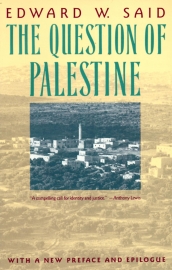
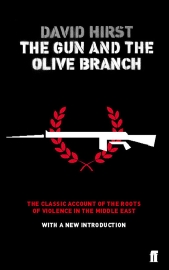
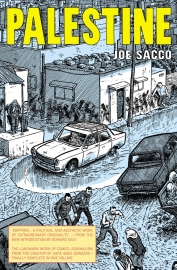

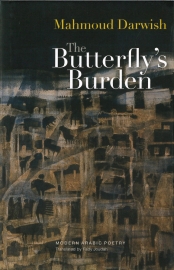
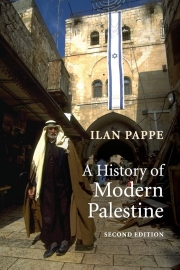
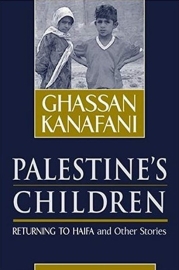
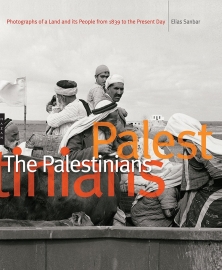
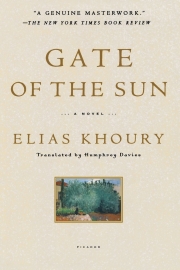
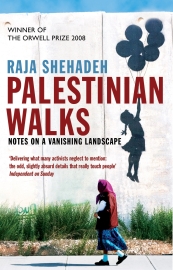
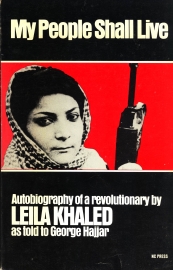
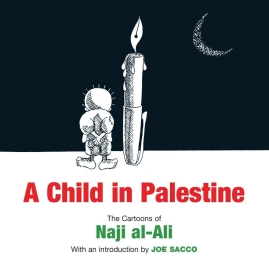
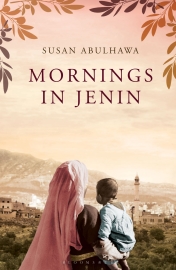
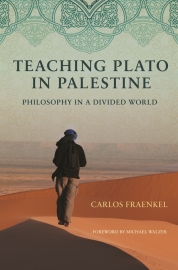
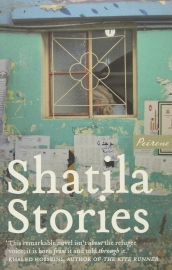
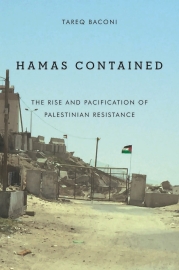
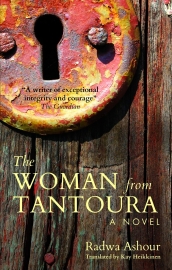
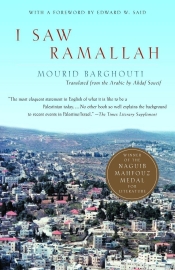
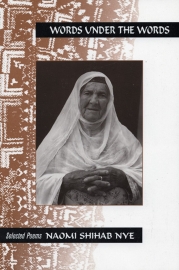
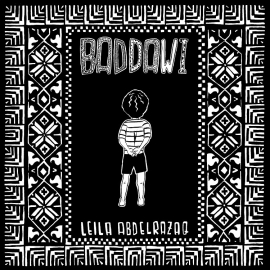
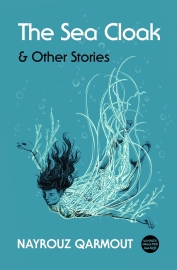
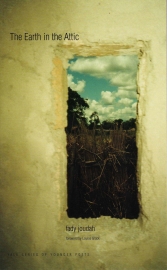
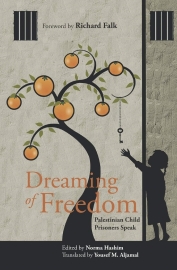
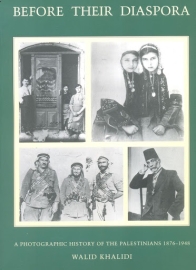
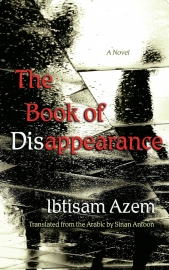

0 Comments:
Post a Comment
Subscribe to Post Comments [Atom]
<< Home